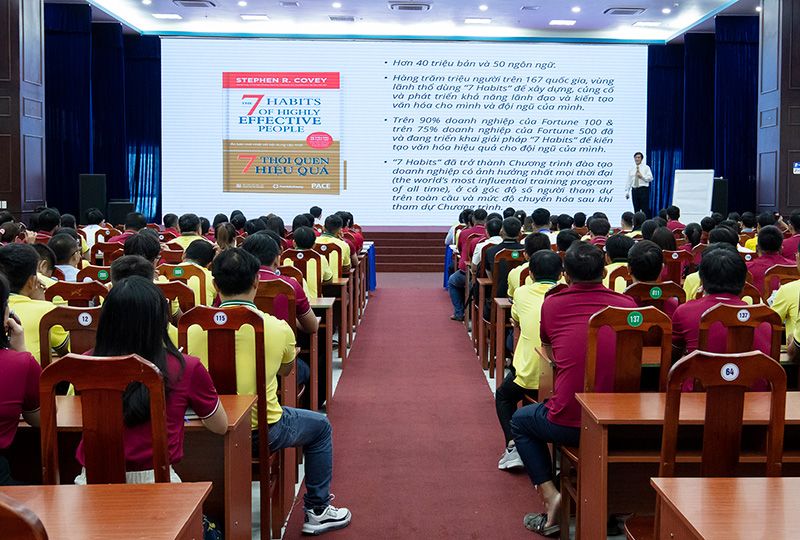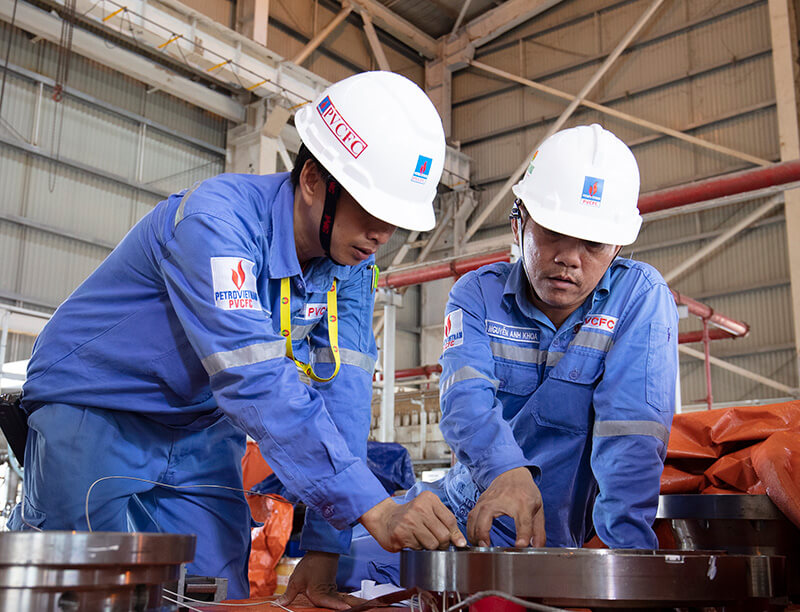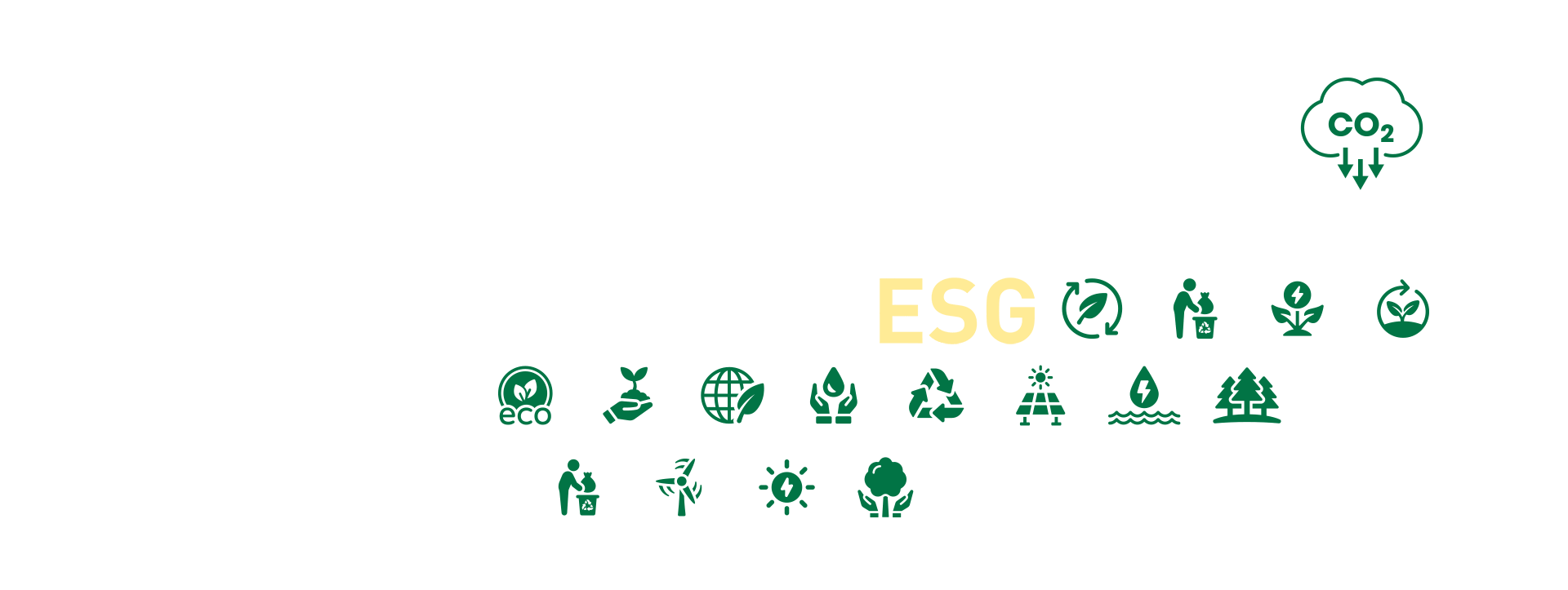PVCFC’S GOVERNANCE CULTURE
GRI 205-2,3 / GRI 207-1
PVCFC consistently considers corporate culture as a key competitive advantage, contributing to the sustainable development of the Company, in which corporate governance culture is an indispensable component of the overall corporate culture.

At PVCFC, the corporate governance culture is gradually supporting and optimizing corporate governance activities effectively, helping to build a sustainable competitive advantage. Good corporate governance enables PVCFC to better manage risks and seize opportunities for sustainable development, especially in the context of climate change and other inherent risks that pose challenges and threats to the Company's sustainability.
PVCFC is on a continuous journey to improve and further enhance the quality of its corporate governance, striving to keep pace with the progress of regional countries. Currently, PVCFC fully complies with 100% of Vietnam’s corporate governance regulations and maximizes adherence to best practices outlined in the ASEAN Corporate Governance Scorecard 2023, while also referring to the corporate governance principles of the G20/OECD.
PVCFC has also issued a comprehensive set of foundational documents that shape its Corporate Governance Culture, including the Code of Conduct, Regulations on Management of Conflicts of Interest and Related Party Transactions, and Whistleblowing Regulations ... These documents are not only regulatory frameworks but also reflect PVCFC’s governance philosophy, shaping corporate culture and ensuring sustainable development.
(For further details, please refer to Chapter 4 of PVCFC’s 2024 Annual Report)
BUILDING A SUSTAINABLE CORPORATE GOVERNANCE FOUNDATION
GRI 2-15, 18, 27
PVCFC has issued regulations and policies that incorporate best-practice Corporate Governance Principles to establish an effective corporate governance mechanism, mitigate risks, and drive sustainable development.
(For further details, please refer to Chapter 4 of PVCFC’s 2024 Annual Report)
PVCFC recognizes that risk governance is a critical factor in corporate governance and serves as a fundamental pillar in building a strong foundation for the Company’s sustainable growth.
PVCFC applies the "Three Lines" model to support the Board of Directors and the General Director in overseeing and managing risk governance. This approach enables the Company to identify factors that may impact its mission, vision, and strategic objectives, while implementing measures to mitigate threats and capitalize on opportunities.
(For further details, please refer to Chapter 4 of PVCFC’s 2024 Annual Report)
Building upon its enterprise risk management framework, which has been continuously refined over the years, PVCFC will further enhance its system in 2024 in alignment with best practices. PVCFC places strong emphasis on embedding risk governance into all operational activities.
In line with the ESG strategic orientation - Sustainable development, adopted by Decision No. 1696/QĐ-PVCFC dated June 10, 2024, issued by the Board of Directors, the Company has commenced the integration of ESG risks into its risk management framework.
SEE MOREDigital Transformation – The Foundation for Effective Governance
In line with the strategic development direction set by the Board of Directors (BOD), Ca Mau Petroleum Fertilizer Joint Stock Company (PVCFC) has strongly implemented digital transformation, establishing a solid foundation for effective governance, optimizing production processes, improving business performance, and enhancing service quality. Key initiatives include applying modern technology in operations management, automation of production processes, and developing digital solutions to support governance and decision making capabilities.
Development Orientation for Digital Transformation
PVCFC defines digital transformation as a key driver for governance, production, and business activities, with the following specific directions:
Digital Transformation Objectives
Over the years, PVCFC has consistently promoted comprehensive digital transformation, leveraging advanced tools and technologies to optimize processes, improve operational capacity, and respond flexibly to market fluctuations.
Currently, PVCFC continues to invest in its IT ecosystem and deploys the following key systems:
ERP Governance System
E-Office System
Data Lake/Data Warehouse
Dashboard Reporting System
Enterprise Production Management System (EPMS) and RFID-based Inventory Flow Management
Digitized Business Applications (DMS) and App 2Nong
CRM System and Social Media Integration
By 2025, PVCFC aims to develop a smart factory, upgrade and improve its governance and application systems, further enhance its Data Lake infrastructure, expand AI applications for data analytics, and integrate all applications into a unified digital ecosystem, ultimately driving operational efficiency and sustainable development.
Key Activities and Notable Projects
GOVERNANCE ON SUSTAINABLE DEVELOPMENT
GRI 2-14
Sustainable development Governance structure of PVCFC
Environmental and social risk management
GRI 2-25

Recognizing the potential risks, the Company has issued a Risk Management Regulation, which outlines the management principles in the Company’s risk management activities and serves as a legal basis for the Board of Directors, the Audit and Risk Management Committee, the General Director, the Supervisory Board, the Internal Audit Division , and the Company’s units to implement risk management. This regulation is applied consistently and is closely aligned with the Company’s Mission, Vision, Core Values, and Strategic Objectives.
The Company’s risks are identified, assessed, and prioritized by the appropriate management level based on “Risk Metrics,” which evaluate the likelihood and impact of the risks. All employees of the Company must comply with the approved Risk Management Framework, Risk Management Regulation, and Risk Management procedures.
(Details on risk policies are outlined in the Risk Governance section of the 2024 Annual Report, page 232 to 243)
The Environmental and Social Risk Management Policy is central to sustainable governance and is a key driver for PVCFC to enhance its sustainable development efforts, both now and in the future.
The Company’s Risk Appetite Statement addresses aspects related to its operations, including environmental-social risks and information technology risks.
The Company is committed to complying with legal regulations (including those related to labor safety and the environment) in Vietnam and in the countries and territories where PVCFC operates.
The Company proactively identifies and meets compliance requirements, establishes, and operates a management system to ensure compliance, including (but not limited to): the Code of Conduct (CoC), policies, procedures, and guidelines in investment, production, business operations, and the fulfillment of contracts/commitments with customers, suppliers, and partners.
Climate Change Risks and Opportunities
PVCFC is deeply aware of the risks that climate change poses to the Company's production and business activities. As a fertilizer production and trading enterprise, PVCFC understands that agricultural production can be severely affected by rapidly changing climatic conditions, threatening productivity and yield, such as higher temperatures, increased rainfall, prolonged heat waves, etc. PVCFC not only faces physical risks such as floods, sea level rise, droughts, and tropical storms, but also encounters transition risks associated with the shift toward a low-carbon economy.
Alongside the risks, climate change also presents opportunities for the Company:

Opportunities for research and development of products that help crops adapt better to climate change, improve nutrient efficiency, and reduce negative environmental impacts.
Products such as N.Humate+TE, N46 Plus... help PVCFC’s customers cope better with drought, salinization, and other climate-related challenges.

The energy transition and production technology transformation are inevitable trends; climate change creates an opportunity to accelerate technological innovation, including new technologies for green hydrogen production and green fertilizers.

Opportunities to apply scientific research to improve energy efficiency: The application of scientific advancements in optimizing production systems, using renewable energy, or upgrading equipment helps businesses reduce operating costs while meeting increasingly stringent emission standards.

Opportunities from market transition and expansion: Fertilizer oversupply in domestic and regional markets poses a challenge for the Company. However, along with this challenge, the ability to meet increasingly high sustainability requirements opens many opportunities for PVCFC to expand exports into new, high-standard markets beyond its traditional ones. Since early 2024, Ca Mau Fertilizer has officially entered two of the world’s most demanding markets-New Zealand and Australia-while continuing to strengthen its presence in existing markets in the Americas.
Based on the established Risk Appetite Statement, Risk Tolerance Levels, and Risk Metrics, the Executive Management, the Audit and Risk Management Committee (ARMC), and the Board of Directors (BOD) receive quarterly reports on the implementation of risk management, reviewing and assessing the identified key risks in the Company's Risk Register as well as emerging risks. This allows for timely monitoring and guidance to ensure effective risk management.
Guided by the Board of Directors' direction on sustainable development, the Company deeply understands the significance and importance of managing risks related to sustainable development. By identifying both the challenges and opportunities that these risks present, the Company will develop appropriate risk management strategies and operational plans.

Information management and Sustainability Reporting
Disclosure on on risk management or sustainability activities is governed by the information/document management regulation issued by the Board of Directors (BOD).
When preparing sustainability report, the BOD forms a working group, and the relevant departments/units submit the information/documents under their responsibility to the working group for compilation and reporting. The roles of the relevant stakeholders are as follows:
Task
Responsible Unit
Collecting information and reporting at each department
Department staff
Overseeing and reviewing information at departments
Department leadership
Coordinating, consolidating, and general review
Planning & Investment Department
Providing internal assurance
Internal Audit & Risk Management
Control at the Executive Board level
Deputy General Director
Oversee at the Board of Directors level
ESG Committee
The Audit & Risk Management Committee and the ESG Committee are responsible for oversight, while the Board of Directors (BOD) approves the disclosure of information on sustainable development to ensure it meets the required standards.
Requirements and Policies for Senior Personnel in Sustainable Development
Recognizing the importance of governance and practice in sustainable development, the Company has established requirements and policies for the Company's management and executive team related to sustainable development, such as:
For the composition of the Board of Directors, in addition to core professional competence requirements, the Company aims for diversity within the Board with criteria that include:
The objectives and roadmap for achieving Board diversity are presented on page 175 of the 2024 Annual Report.
When developing policies on remuneration and compensation for the Board of Directors and the Executive Management, the Company uses those criterias groups related to sustainable development. The performance evaluation of the Board and Senior Management includes KPIs related to sustainable development.
Details of the remuneration policy aligned with sustainable development are disclosed on page 228 of the 2024 Annual Report.
Creating Sustainable Value
In 2024, PVCFC continued to reaffirm its commitment to sustainable development through expanded investments, optimized business performance, and enhanced social responsibility. Key projects, green financial governance initiatives, and inclusive financial policies have not only laid a solid foundation for long-term growth but also made positive contributions to the community and the environment-moving towards a prosperous and sustainable future.
Creating Sustainable Value (continued)
GRI 201-1
Economic value generated and distributed
The Company has successfully achieved and exceeded all planned targets, delivering outstanding results:
0
 0 %
0 %
compared to 2023
CONSOLIDATED TOTAL REVENUE
(billion VND)
0
 0 %
0 %
compared to 2023
CONSOLIDATED PROFIT BEFORE TAX
(billion VND)
0
 0 %
0 %
compared to 2023
CONSOLIDATED PROFIT AFTER TAX
(billion VND)
Distributed Economic Value 2024
Alongside efforts to carry out business activities effectively, PVCFC always prioritizes ensuring benefits for all stakeholders and continuously strives to create more sustainable and prosperous value for all parties involved. In 2024, PVCFC recorded the following economic value distributions:
Contribution to State Budget:
VND 371 billion, decreased by 13% compared to 2023
Dividend payments
The Company paid 2023 dividends at the rate of 20%
Green Finance Framework
Green finance focuses on investing in projects and activities that minimize negative environmental impacts, such as renewable energy, energy conservation, and sustainable resource management. Currently, PVCFC is investing in projects that benefit the environment, while also contributing to social welfare initiatives such as tree planting, bridge construction, and improving the environment and infrastructure in various areas.
Additionally, PVCFC is investing in projects and scientific researches that help reduce environmental emissions and regenerate energy, such as rooftop solar energy projects; food-grade CO2 production projects; investments in scientific research topics like the ORC system; utilizing excess energy to generate electricity for production at the Ca Mau Fertilizer Plant, and developing organic fertilizers and fertilizers that are environmentally friendly to the soil such as OM Ca Mau, Ure Bio microbial fertilizer, and N. Humate, among others.
Inclusive Finance
Inclusive finance ensures that everyone, especially vulnerable and disadvantaged groups who face challenges accessing traditional finance, has the opportunity to access financial services.
Initiating its first activities aimed at helping farmer customers overcome financial difficulties, PVCFC has issued Decision No. 1886/QĐ-PVCFC on June 25, 2024, approving and implementing the Deferred Payment Sales Regulation. This is considered a credit extension activity aimed at supporting customers facing cash flow challenges in their business operations.